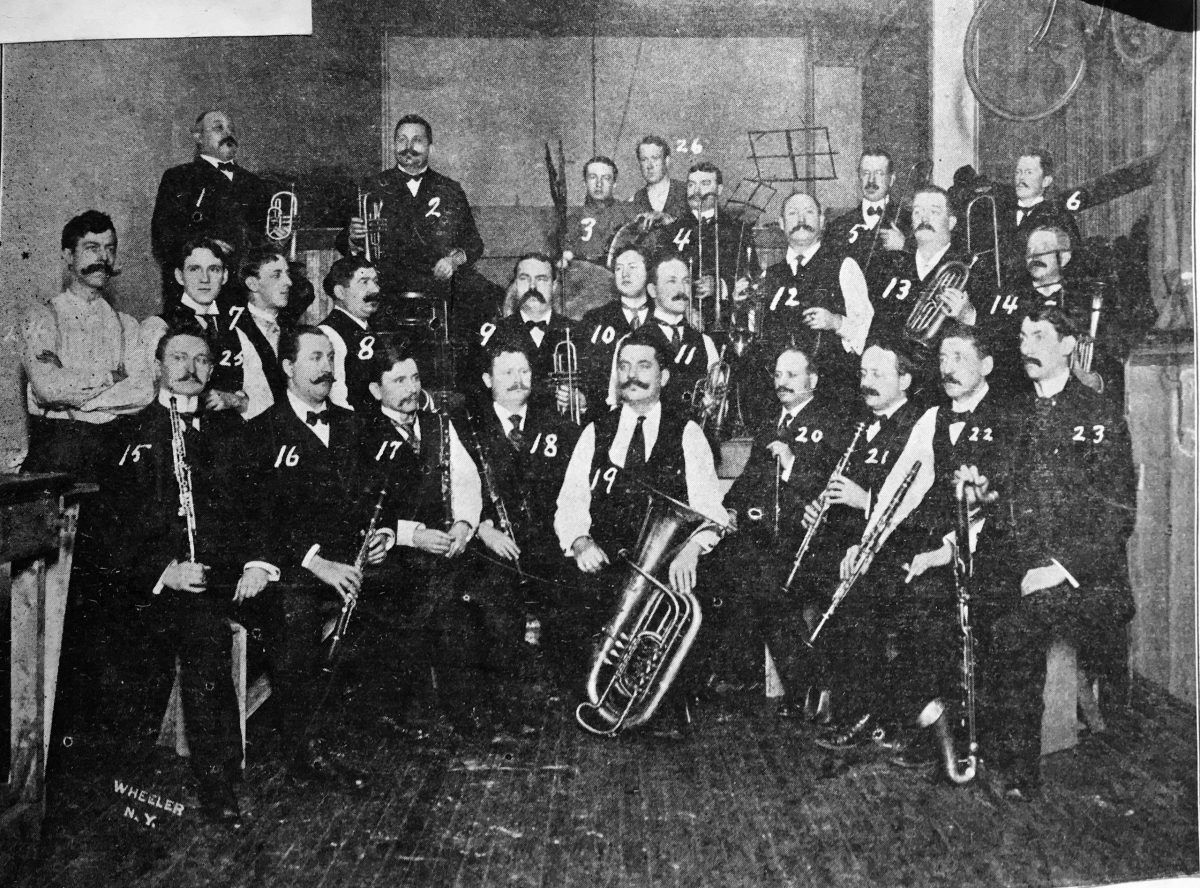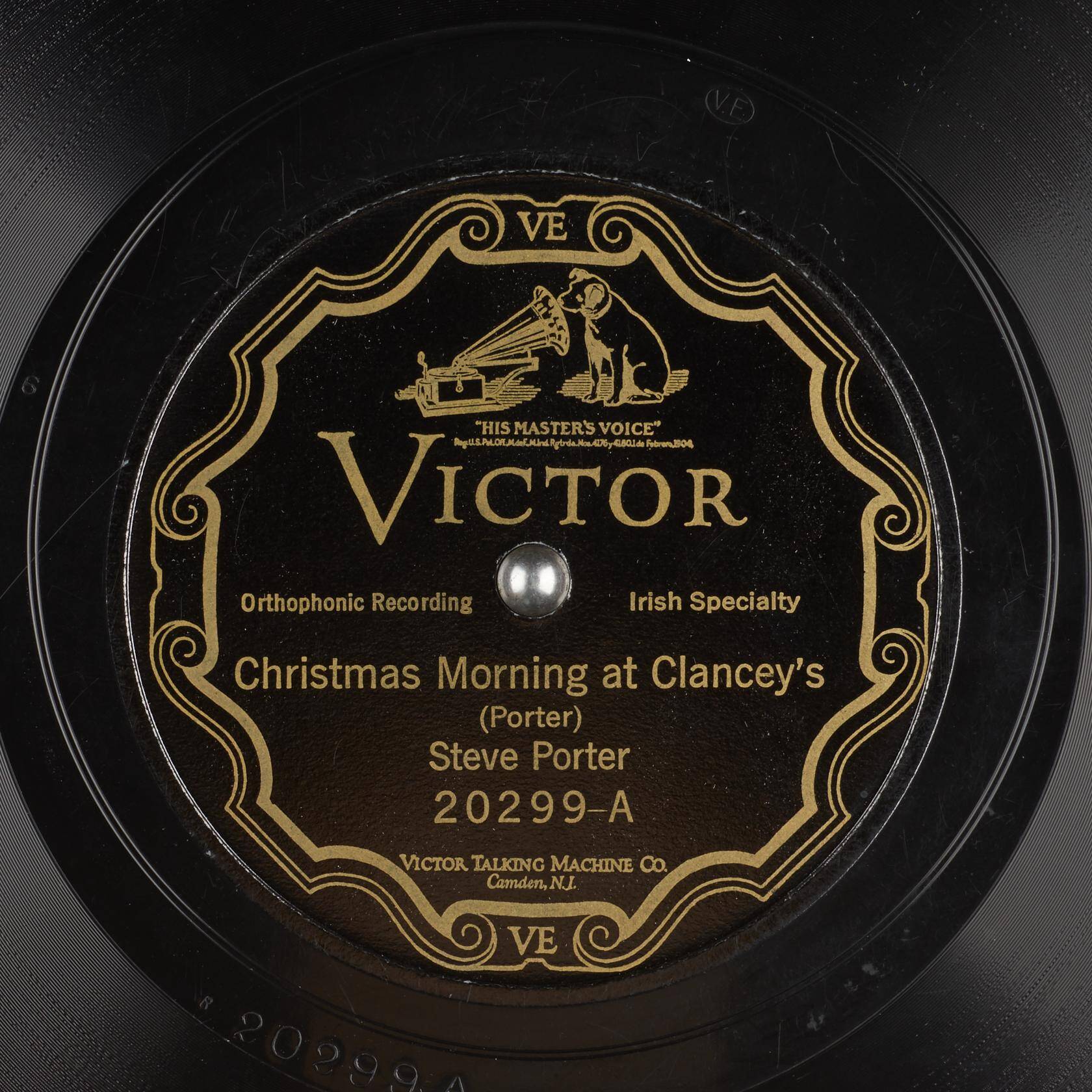Last year, in this column was an article on drummer Jimmy Hager, bandmaster Fred Hager’s brother, but since that publication, more has been discovered about him. After communications with Jimmy’s grandson, more has come to light about his personality and how different he was from his rather vain and eccentric brother Fred.
Fred had a very large personality, always speaking as though he was the smartest one in the room. Jimmy’s grandson Don seemed to recall him carrying much this personality and demeanor; always dressing a little bit better than everyone else, he indicated. He remained a dandy into his old age, despite not having any of his magnificent brown hair by then. According to Don, his grandfather was a very kind and caring man, with little to say and nothing to brag about. He was a very serious man, who cared deeply for his career and interests, those being music and baseball.
Jimmy was a big fan of baseball his entire life. As many folks of his generation were, he was no exception to this interest. He was always up on the news of the Yankees and Giants, frequently tuning into games whenever they were on. Don also indicated that since the family he married into had connections to the boxing world, Jimmy was also quite keen on following the prize fights. With all this in mind, it wouldn’t be obvious that he spent so much time in recording labs and was such a talented musician.
Jimmy married Isabella Gray in 1902, when she was not even 20. Isabella was a handful. She also seemed to be a great contrast to her relatively gentle and reserved husband. She was a woman not even 5 feet tall, with curly blonde hair and had a passion for the finer things in life. She adored finely made furnishings and rich surroundings, she “had champagne taste but a beer pocketbook” as Don recalled. In the early days of their marriage she bought many pieces of fine antique furniture to adorn their relatively small living space, which at that time was next door to brother Fred’s family. These furnishings ended up staying with them into their old age (as they are still in the last home they owned).
Isabella was quite intrigued with her husband’s life as a musician, making sure to attend every show he was part of. She loved chatting with the other men in the pits he worked for, relishing the good seats she could always get for cheap. Jimmy continued to work in the record labs while Isabella went out looking for cheap antiques she could bring home. Jimmy was perfectly content playing percussion for the phonograph and theater orchestras, living comfortably, especially so after he could move away from the hawk eye of brother Fred.
Sometime late in the 1910s, Jimmy and Isabella (and their 3 children), moved out of the Bronx (where they had lived since they were both very young) and out to Flushing NY, which at the time was an upscale seaside neighborhood. Flushing was also where Fred and Justin Ring lived, owning homes a bit more expensive than Jimmy’s. All seemed well for them, though they never had as much wealth as brother Fred, as he learned early on that the real money was in publishing. They were still able to make ends meet somehow.

By the end of the decade, Jimmy was back in the phonograph labs, this time working for the Okeh company. For most of the decade he was working elsewhere, mostly in pits. He was called back to make records by brother Fred and close friend Justin Ring, as the Okeh lab needed talent. Among the first few batches of Okeh records to be issued in 1918, a few were xylophone solos by Jimmy with the house orchestra. He continued to work for Okeh into the time that brother Fred resigned from his management position.
Fred resigned from Okeh right as things were starting to get hot, the middle of 1923. Right after the Okeh staff traveled to New Orleans to make their famous recordings of King Oliver’s band, old Fred decided he had enough of them. Around that time Fred had become regularly employed on the radio, and would soon be working for the new CBS corporation. Jimmy stayed with Okeh through their rather awkward transition into electric recording. In 1924, Justin Ring took over the position formerly held by Fred. Ring kept Jimmy employed at Okeh well into the electric era.

By the late ’20s, Jimmy Hager was well known in the phonograph world, as he was most certainly a veteran, and had worked for several labels by then. He often worked for Victor when they started making orthophonic records, mostly adding all sorts of characteristic sound effects. Most of his work by this time was sound effects, and it is likely that at some point in the ’20s he spent time doing this for silent films. Little is known about how Ring and Fred Hager got involved in the silent film industry, but many of their cues and compositions ended up in several folios of music for silent films. This connection likely got Jimmy some work in film pits. Around the beginning of the depression, Jimmy was offered a job for Disney, who at the time was just beginning to make sound cartoon films. Jimmy turned down the offer, preferring to spend time at home with his family.
Soon everything fell apart, Jimmy and his family lost their money, their home, and their car. As with many people, the depression hit them hard. They had to move out of Flushing to a much cheaper home in Queens. Jimmy worked two jobs to make any kind of money, as a musician’s agent and as a subway tokener. Meanwhile in Flushing, Fred and Justin Ring were living comfortably on the seashore, spending a lot of their free time on Fred’s boat, Kathryn.
Jimmy’s son Mel hadn’t a real direction in life, working many different jobs, spending a lot of his time in pool halls, and drinking. He did little to really support the family during the depression, but at least he had work. Though the war did get Mel out of the house and the neighborhood, Jimmy and Isabella had to move one again, as their money was still scarce. They moved to a three room colonial shack on Long Island.
Right before the war ended, Mel died suddenly. Jimmy and Isabella had already lost two daughters in infancy, but losing Mel was quite a shock. His cause of death was labeled as a transit accident, but the family legend seems to say otherwise. According to his nephew Don, Mel likely stumbled in front of a train while drunk, accidentally getting hit. Going to visit Mel’s grave became a family tradition after his death, as Don remembered as a young boy going to visit, and hearing stories of his free and easy will.
Jimmy and Isabella lived rather cramped in their three room house, but were content enough to stay throughout their retirement. Often in the 1940s and ’50s, Uncle Fred and Aunt Clara would come over to their little cottage for family gatherings, all finely dressed fresh from the city. There was always some sort of tension between Fred and Jimmy, and the wealth gap may have been part of the reason, but it wasn’t perfectly obvious. Fred was vibrant and active in his old age, but unfortunately Jimmy developed Alzheimer’s and therefore wasn’t nearly as active. He enjoyed watching Lawrence Welk in his last few years, and cared very deeply for his grandkids, like Don, who fondly remembers him. He died in 1961, but his name and history live on in their family, as he left them with many pieces of historic percussion equipment—and the furniture, of course.
R. S. Baker has appeared at several Ragtime festivals as a pianist and lecturer. Her particular interest lies in the brown wax cylinder era of the recording industry, and in the study of the earliest studio pianists, such as Fred Hylands, Frank P. Banta, and Frederick W. Hager.






















